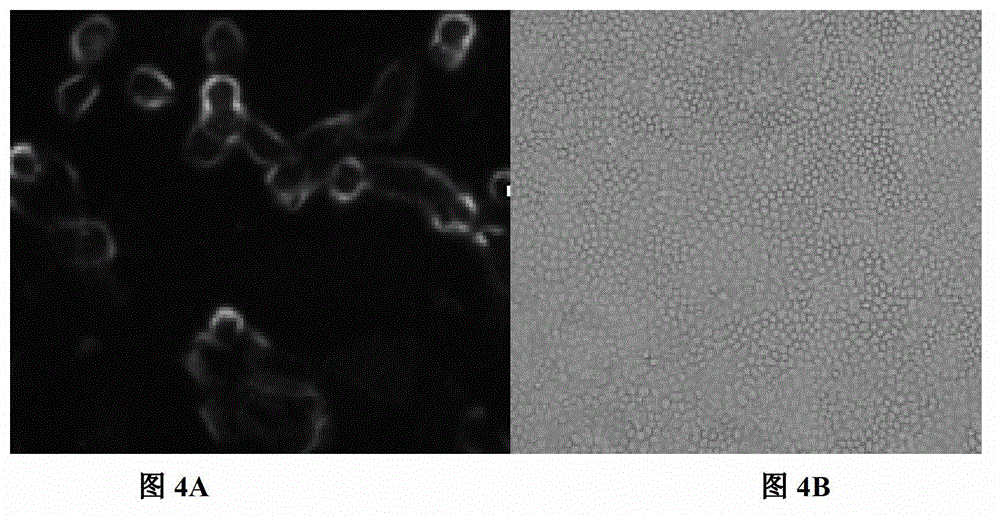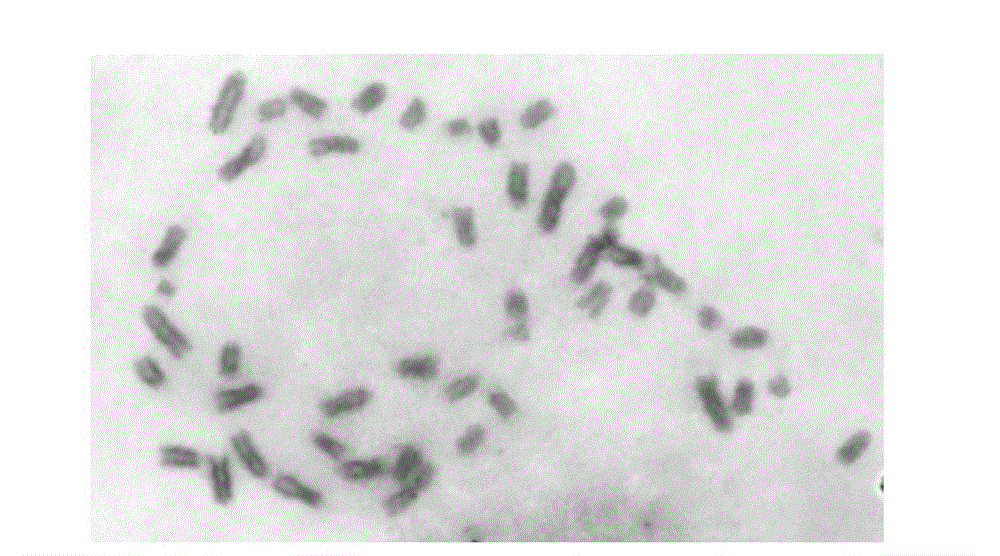Monoclonal antibody of anti-H9 subtype flu virus haemagglutinin protein and application thereof
The technology of monoclonal antibody and hemagglutinin protein is applied in the field of animal virus and animal epidemiology detection technology, and can solve the problems of damping the enthusiasm of farmers and herdsmen for breeding, high incidence of infectious diseases, economic loss of Tibetan chicken breeding industry, etc. problems, to achieve the effect of wide detection sample range, strong specificity and short detection time
- Summary
- Abstract
- Description
- Claims
- Application Information
AI Technical Summary
Problems solved by technology
Method used
Image
Examples
Embodiment 1
[0048] The preparation of embodiment 1 H9 subtype influenza virus
[0049] 1. Isolation of H9 subtype influenza virus
[0050] 1. Separation process: Collect sick chicken samples with sterilized throat swabs, place in sterilized phosphate buffered saline (abbreviated as PBS, formula: Na 2 CO 3 1.59g, NaHCO 3 2.93g, with ddH 2 O to 1000ml), and then 0.2ml of the throat swab sample solution was inoculated into 9-day-old specific pathogen-free (Specific pathogen Free, SPF) chicken embryos (purchased from Beijing Meria Weitong Experimental Animal Technology Co., Ltd.), and placed at 35 After incubating at ℃ for 72 hours, the allantoic fluid was harvested for qualitative hemagglutination test, and the samples that were positive in the hemagglutination test were then finalized by RT-PCR test.
[0051] 2. Identification basis: RT-PCR tested positive samples, amplified HA, sent to Shanghai Sangon Bioengineering Co., Ltd. for sequencing, and compared the obtained DNA sequence wit...
Embodiment 2
[0067] Example 2 Preparation of monoclonal antibody against H9 subtype influenza hemagglutinin protein
[0068] 1. Use the purified and inactivated H9 subtype influenza virus A / Chicken / Tibet / S1 / 2009 original strain as the antigen, emulsified with Freund's adjuvant (freund's complete adjuvant is used for the first immunization, Freund's complete adjuvant is used for the second and third immunizations) 5-8 week old BALB / c mice (purchased from Hubei Experimental Animal Research Center). The first immunization dose was 20 μg / mouse, and each mouse was injected subcutaneously at multiple points on the back of the neck. Two weeks later, a booster immunization was given with the same dose, and a booster immunization was given again two weeks later, with a dose of 40 μg / mouse. Two weeks later, a small amount of mouse blood was collected by docking the tail, and the serum was collected, and the antibody titer of the mouse was detected by the hemagglutination inhibition method. After th...
Embodiment 3
[0096] Example 3 Identification of Anti-H9 Subtype Influenza Hemagglutinin Protein Monoclonal Antibody
[0097] 1. Identification of HI potency
[0098] The H9 subtype influenza virus isolated by the invention is used as an antigen to measure the potency of hybridoma cell culture supernatant and mouse ascites by hemagglutination inhibition method. The results are shown in Table 1.
[0099] Table 1: Determination of titers of hybridoma cell culture supernatant and mouse ascites by hemagglutination inhibition method (HI)
[0100] cell culture supernatant mouse ascites Hemagglutination inhibition (HI) titer 2 9 2 18
[0101] 2. Identification of Ig subclasses (types) of monoclonal antibodies
[0102] The monoclonal antibody obtained in the present invention was identified with the Mouse Mab Isotyping Test Kit (Mouse Mab Isotyping Test Kit, purchased from THERMO Company), and it was determined that the monoclonal antibody prepared in the present inve...
PUM
 Login to View More
Login to View More Abstract
Description
Claims
Application Information
 Login to View More
Login to View More - R&D
- Intellectual Property
- Life Sciences
- Materials
- Tech Scout
- Unparalleled Data Quality
- Higher Quality Content
- 60% Fewer Hallucinations
Browse by: Latest US Patents, China's latest patents, Technical Efficacy Thesaurus, Application Domain, Technology Topic, Popular Technical Reports.
© 2025 PatSnap. All rights reserved.Legal|Privacy policy|Modern Slavery Act Transparency Statement|Sitemap|About US| Contact US: help@patsnap.com



